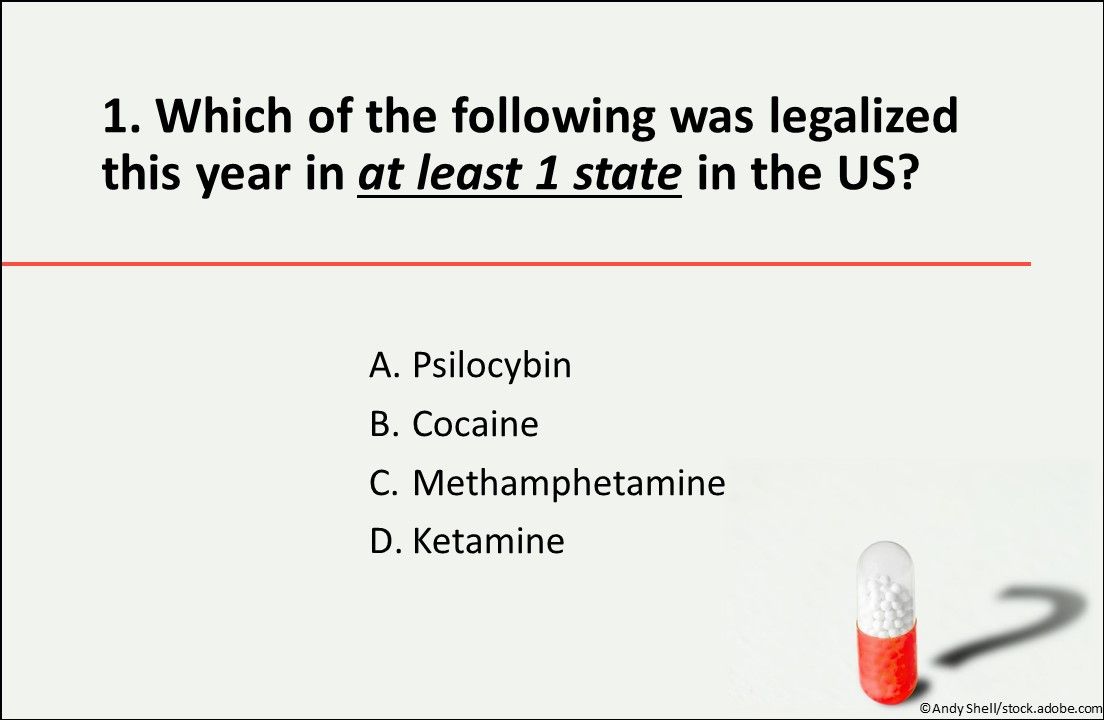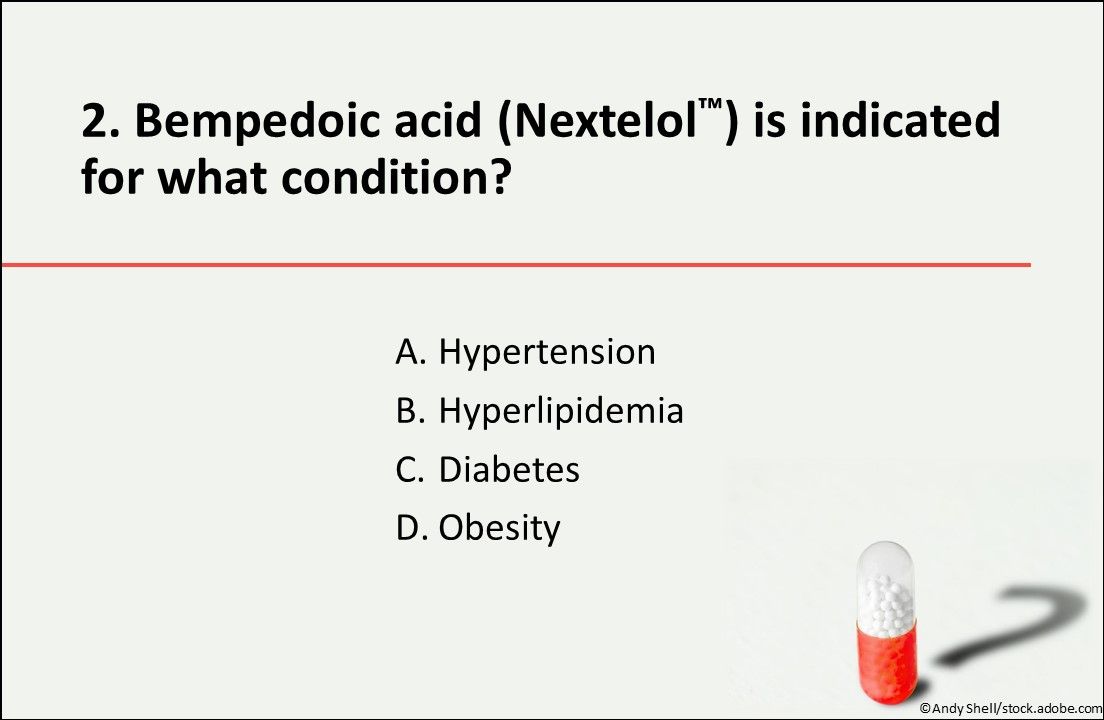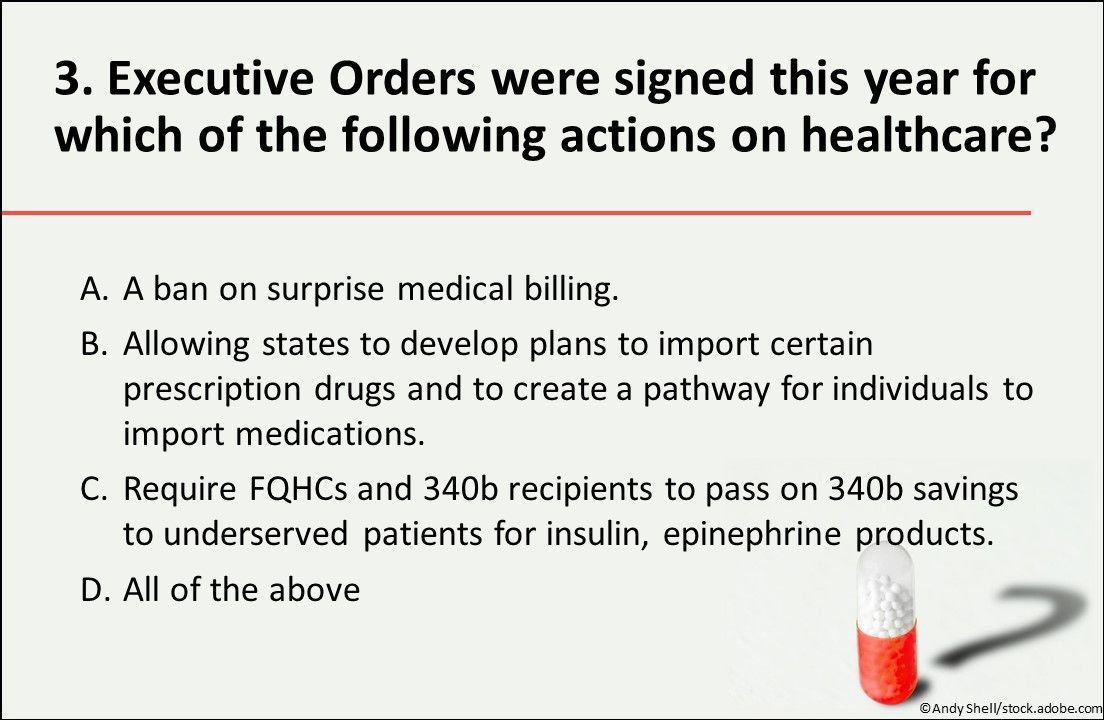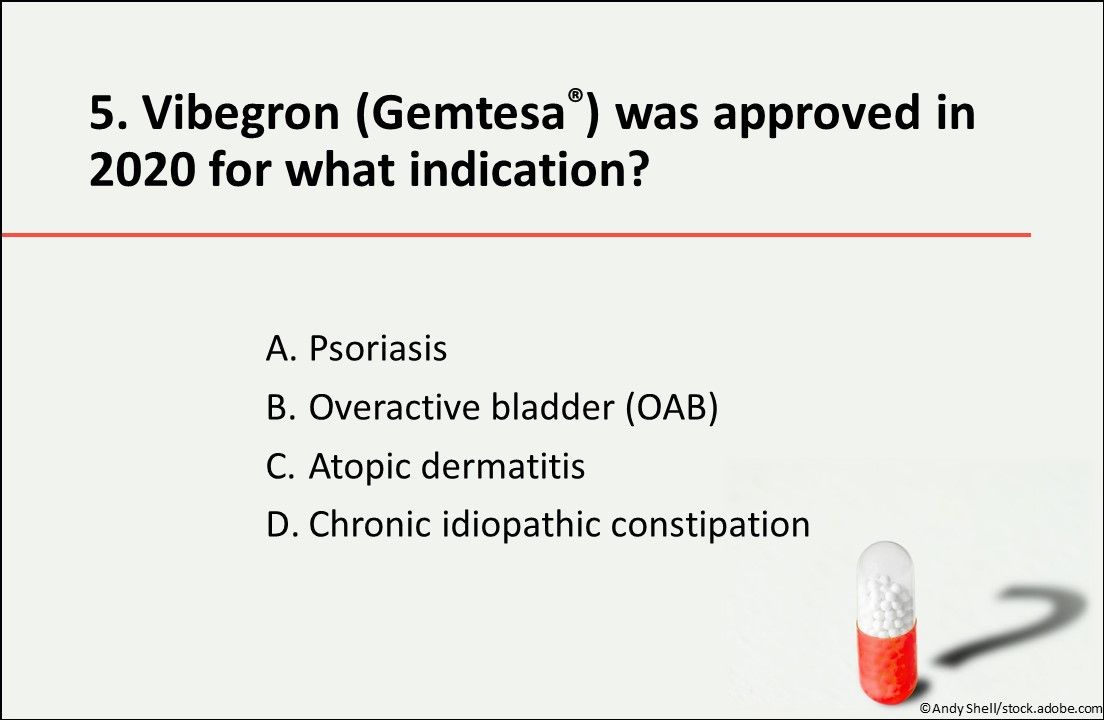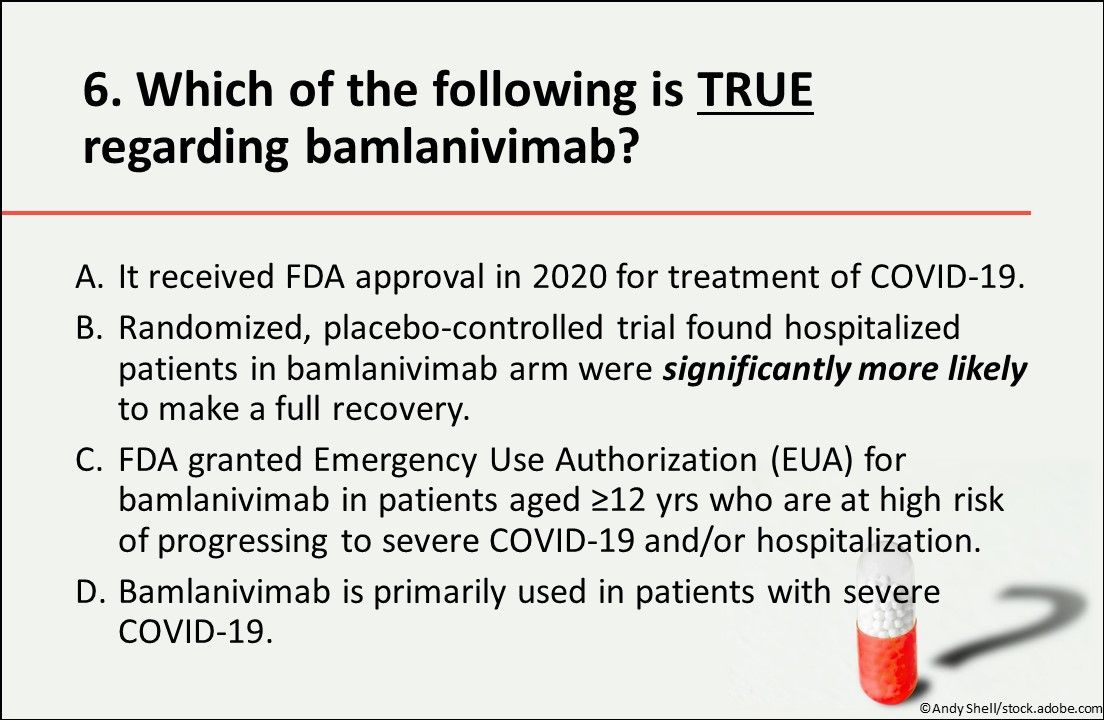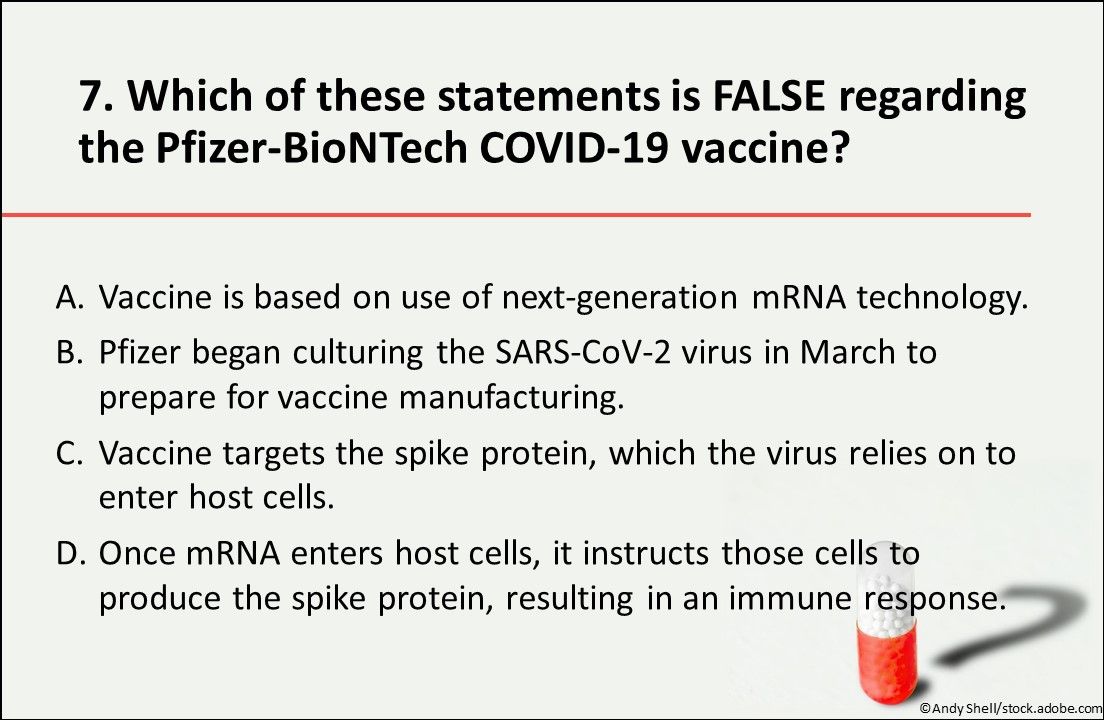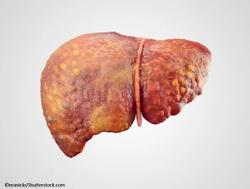© 2025 MJH Life Sciences™ , Patient Care Online – Primary Care News and Clinical Resources. All rights reserved.
Non-COVID-19 Drug News: A Quiz on Other 2020 Headlines
SAMPLE: What substance was legalized this year in at least 1 US state? Psilocybin? Cocaine? Methamphetamine? Plus 6 more questions on top 2020 headlines.
The year 2020 was an extremely tough year for healthcare, and because coronavirus disease 2019 (COVID-19) rightfully took the spotlight in 2020 it can be easy to forget about other important things that happened in medicine in 2020. This quiz will test your knowledge on the year 2020 in medicine—both for COVID-19 and non-COVID-19.

Answer: A. Psilocybin. Psilocybin, the active compound in magic mushrooms, was legalized in Oregon in 2020 for treatment-resistant depression. It is still illegal under federal law.

Answer: A. Psilocybin (cont.). Cocaine is a Schedule II medication indicated for the induction of local anesthesia of the mucous membranes when performing diagnostic procedures, surgeries on or through the nasal cavities in adults. Methamphetamine is a Schedule II medication indicated for the treatment of attention-deficit/hyperactivity disorder. Esketamine, the s-enantiomer of ketamine, was approved for use in 2019 for treatment-resistant depression.
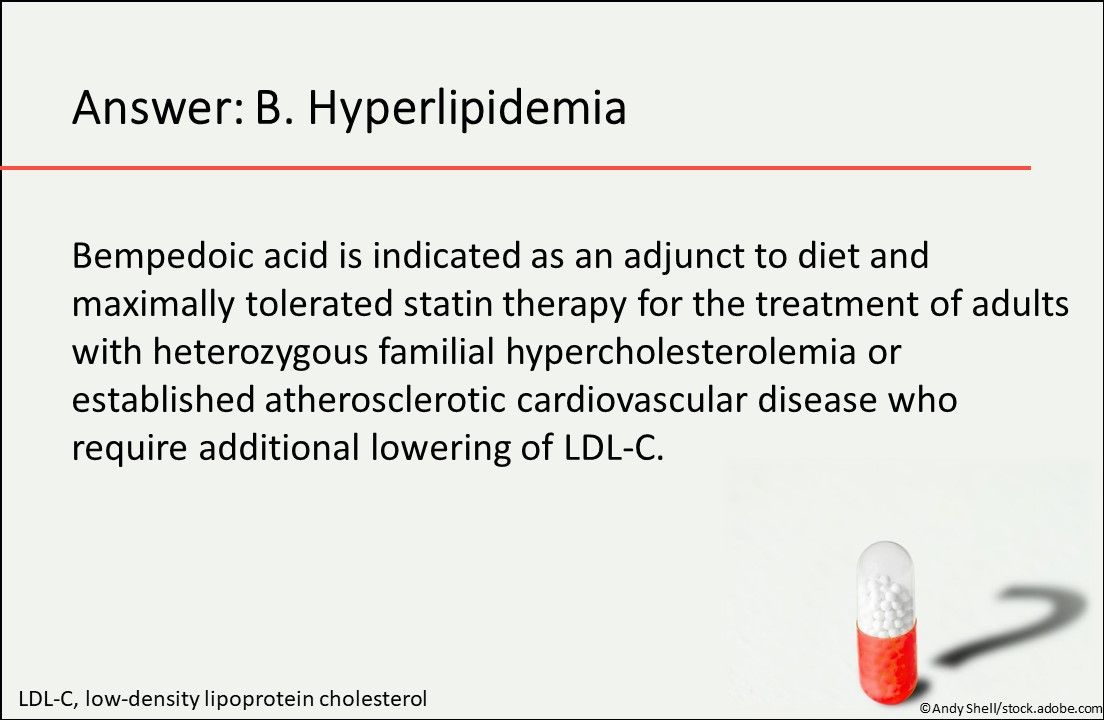
Answer: B. Hyperlipidemia. Bempedoic acid is indicated as an adjunct to diet and maximally tolerated statin therapy for the treatment of adults with heterozygous familial hypercholesterolemia or established atherosclerotic cardiovascular disease who require additional lowering of LDL-C.

Answer: B. Hyperlipidemia (cont.). In the CLEAR Harmony Trial, bempedoic acid lowered LDL-C by an additional 18% vs placebo. Upper respiratory tract infection, muscle spasms, hyperuricemia, back pain, abdominal pain or discomfort, bronchitis, pain in extremity, anemia, and elevated liver enzymes are the most common adverse reactions. Bempedoic acid is taken as one 180mg tablet once daily, with or without food, and should not be taken with simvastatin >20mg or pravastatin >40mg.
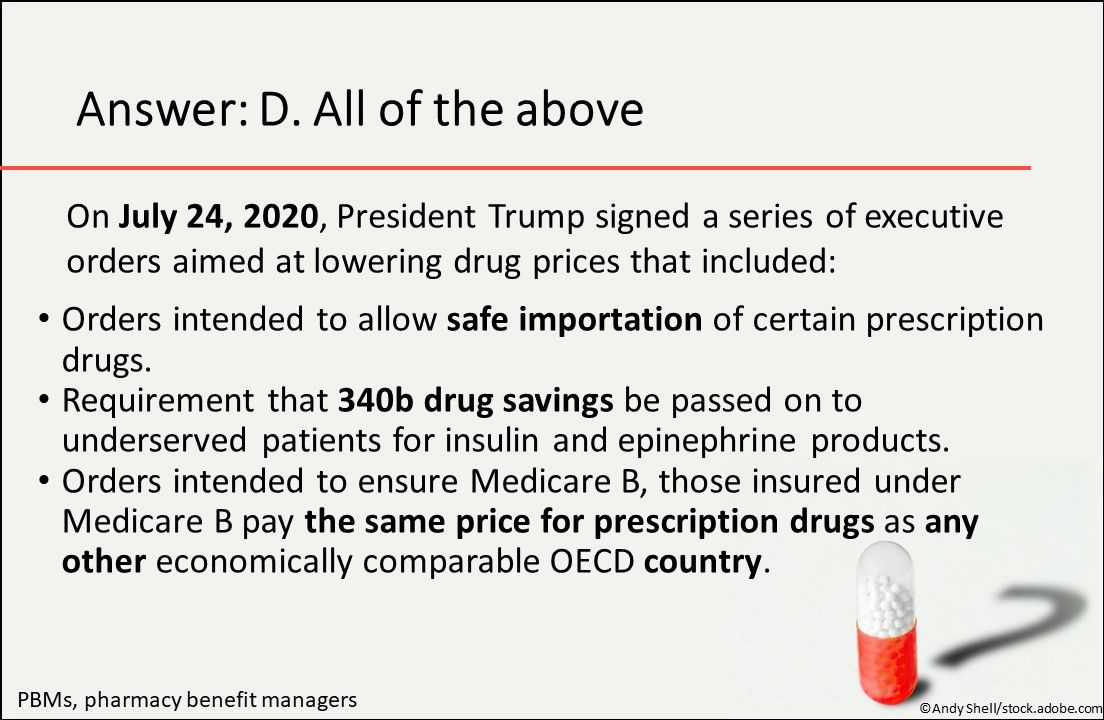
Answer: D. All of the above. On July 24, 2020, President Trump signed a series of executive orders aimed at lowering drug prices that included:
• Orders intended to allow safe importation of certain prescription drugs.
• Requirement that 340b drug savings be passed on to underserved patients for insulin and epinephrine products.
• Orders intended to ensure Medicare B, those insured under Medicare B pay the same price for prescription drugs as any other economically comparable OECD country.
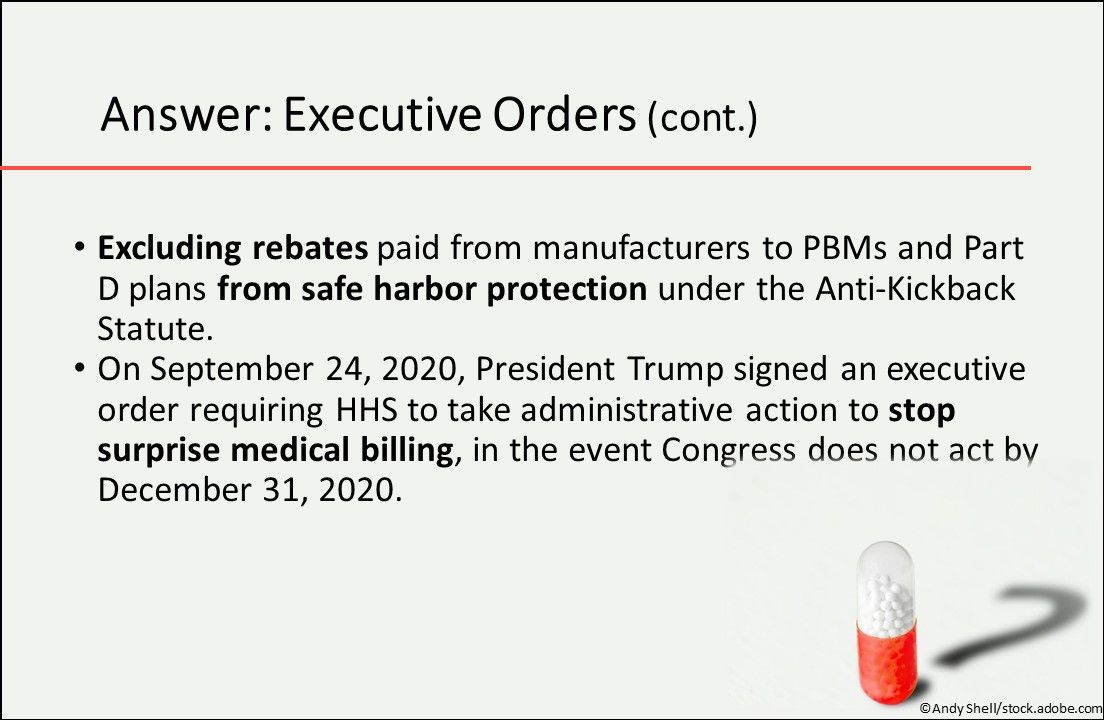
Answer: Executive Orders (cont.):
• Excluding rebates paid from manufacturers to PBMs and Part D plans from safe harbor protection under the Anti-Kickback Statute.
• On September 24, 2020, President Trump signed an executive order requiring HHS to take administrative action to stop surprise medical billing, in the event Congress does not act by December 31, 2020.

Question 4. Which of the above changed in the 2020 focused updates to the Asthma Management Guidelines?

Answer: A. For people aged ≥4 years with moderate-to-severe persistent asthma, preferred treatment is ICS-formoterol in a single inhaler used as both daily controller, quick-relief therapy. Most studies implementing the “SMART” strategy (single maintenance and reliever therapy) have used budesonide as the ICS. Formoterol is the only LABA studied. Formoterol maximum dosing allows for 8 puffs (36 µg) in children aged 4-11 years and 12 puffs (54 µg) in children and adults aged ≥12 years.
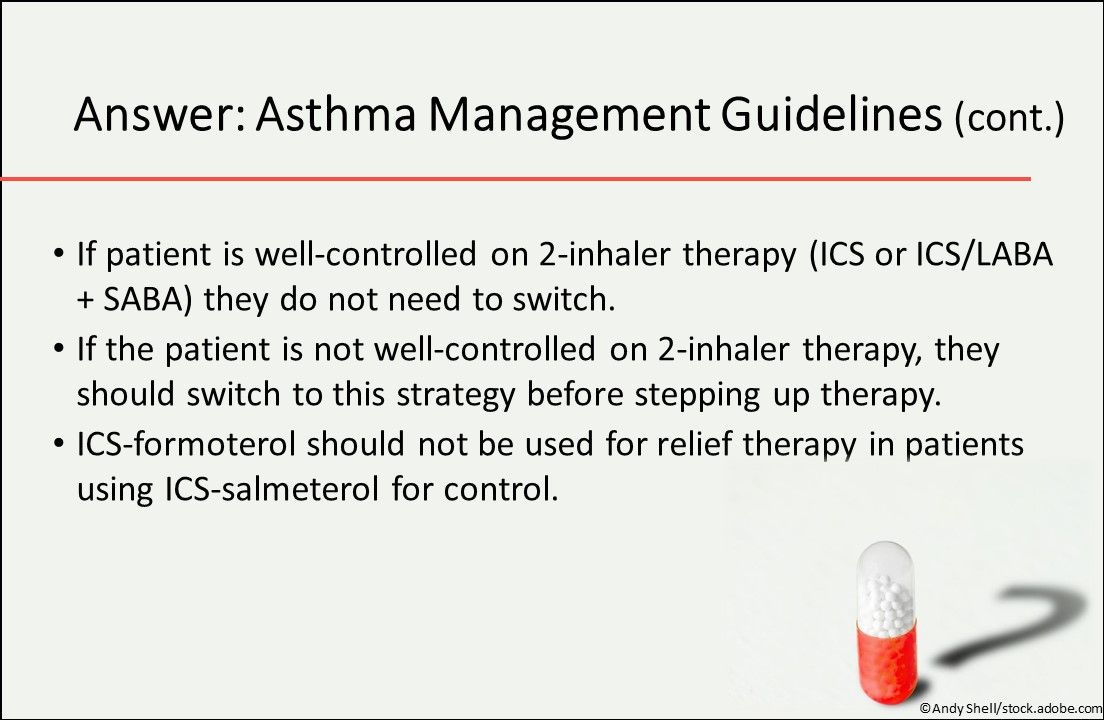
Answer: Asthma Management Guidelines (cont.). The updated Asthma Management Guidelines also recommend that if the patient is well-controlled on 2-inhaler therapy (ICS or ICS/LABA + SABA) they do not need to switch; if the patient is not well-controlled on 2-inhaler therapy, they should switch to this strategy before stepping up therapy; and ICS-formoterol should not be used for relief therapy in patients using ICS-salmeterol for control.
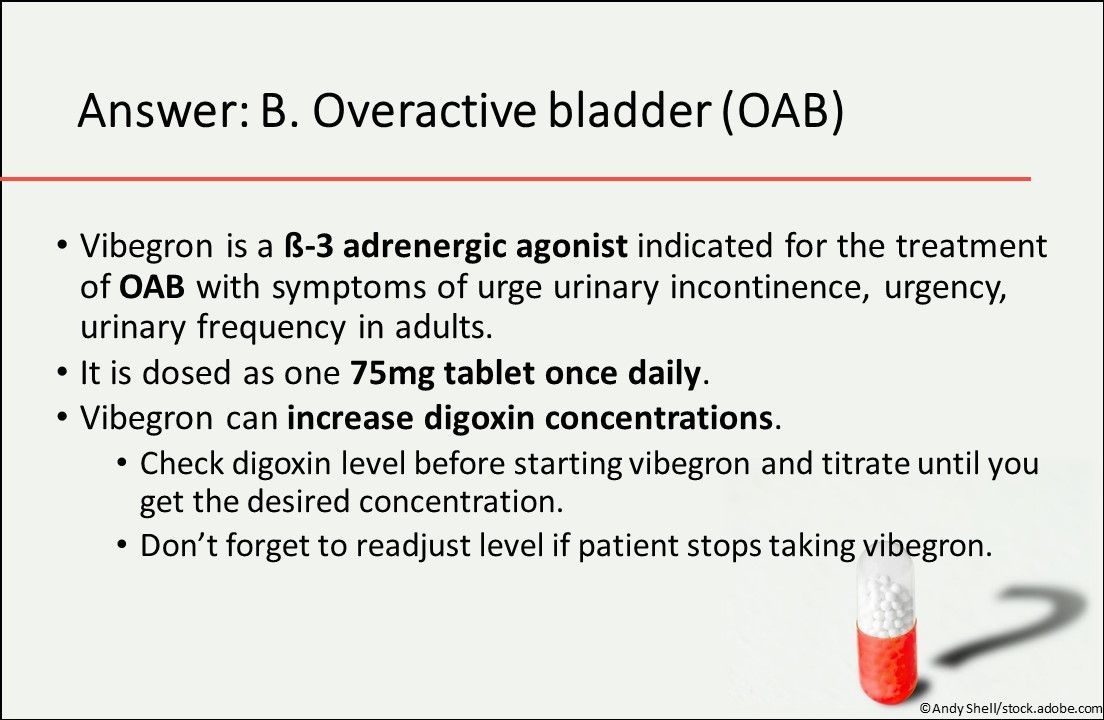
Answer: B. Overactive bladder (OAB). Vibegron is a ß-3 adrenergic agonist indicated for the treatment of OAB with symptoms of urge urinary incontinence, urgency, and urinary frequency in adults. Vibegron is dosed as one 75mg tablet once daily and can increase digoxin concentrations.

Answer: C. FDA granted EUA for bamlanivimab in patients aged ≥12 years who are at high risk of progressing to severe COVID-19 and/or hospitalization. Bamlanivimab is not an FDA-approved product but received EUA in November. Based on an interim analysis of a phase 2 trial for bamlanivimab, in patients at high risk for disease progression, hospitalizations and emergency room visits occurred in 3% of bamlanivimab-treated patients on average vs 10% in placebo-treated patients. The trial is studying 465 non-hospitalized adults with mild-to-moderate COVID-19 symptoms.

Answer: B. Pfizer began culturing the SARS-CoV-2 virus in March to prepare for vaccine manufacturing (false). The Pfizer-BioNTech vaccine is the world’s first mRNA vaccine to receive any type of approval from a regulatory body. Unlike traditional vaccines, which rely on inactivated or attenuated virus, mRNA vaccines can be produced without culturing the infectious agent. Also, the vaccine contains mRNA encoding for SARS-CoV-2 spike protein. After receiving the vaccine, the mRNA enters host cells, where it causes those cells to express that protein and leads to an immune response.


